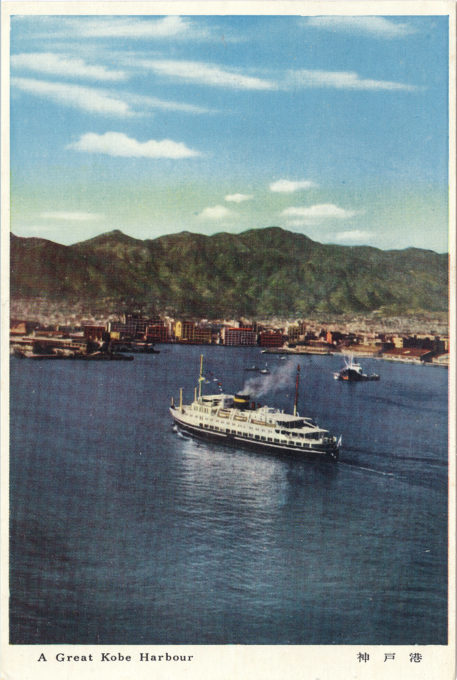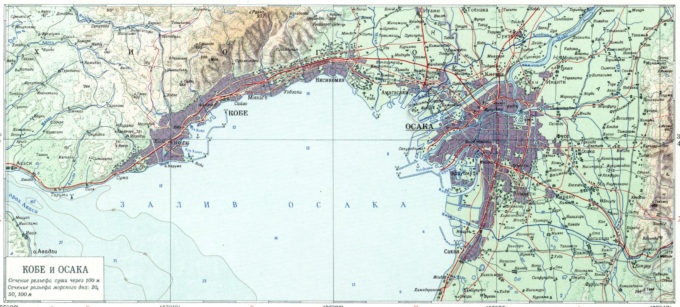
An inter-island steamer enters “A Great Kobe Harbour”, c. 1960, with Rokko-san [Rokko mountain] surrounding the city in the distance.
See also:
View of Kobe Harbor and Nakayamate Catholic Cathedral, Kobe, c. 1925.
The Bund, Kobe, c. 1910.
Japan’s first golf course, Mt. Rokko, Kobe, c. 1920.
Grand Fleet Review, Osaka-Kobe, 1930.
“Kobe, a city with a large foreign community, is the prefectural capital of Hyogo. To the east are the cities of Ashiya, Nishinomiya, Amagasaki, Itami, Takarazuka and Kawanishi. These cities boast fine residential districts.
“The port of Kobe, which recently became a sister city of Seattle, Washington under the Town Affiliation Program, ranks first in Japan in the value of foreign trade. The two great industrial areas of Amagasaki and Kobe follow Tokyo and Osaka in industrial production.
“The steel industry started early in Hyogo Prefecture, now the location of as many as 30 well-known steel firms … Kobe City is [also] Japan’s principal rubber goods producing area. The majority of the rubber factories produce footwear. Three of Japan’s leading dockyards, accounting for the nation’s largest volume (30%) of shipbuilding, are in Kobe and Aioi cities.
“Kobe’s biggest annual event is the Harbor Festival which has a history of 25 years. On October 21 and 22, the local citizenry as well as foreign residents participate in various programs to wish the city prosperity. One of the highlights is an international parade in which boys and girls of many countries dress in their native costumes and ride through the streets. Another feature is a parade of the city’s dignitaries dressed up as historical figures associated with Kobe.
“The Rokko Mountain Range stretching from east to west, encircles Kobe harbor, and forms an undulating green mantle for the city. At the summit are temples , gardens , a golf course and skating rink, hotels, inns and camping sites. A magnificent view of the countryside can be seen from the summit which is accessible in 30 minutes from Kobe by automobile and cable car.”
– The Japan Report, published by the Consulate General of Japan (Chicago), Vol. IV No. 5, March 5, 1958


